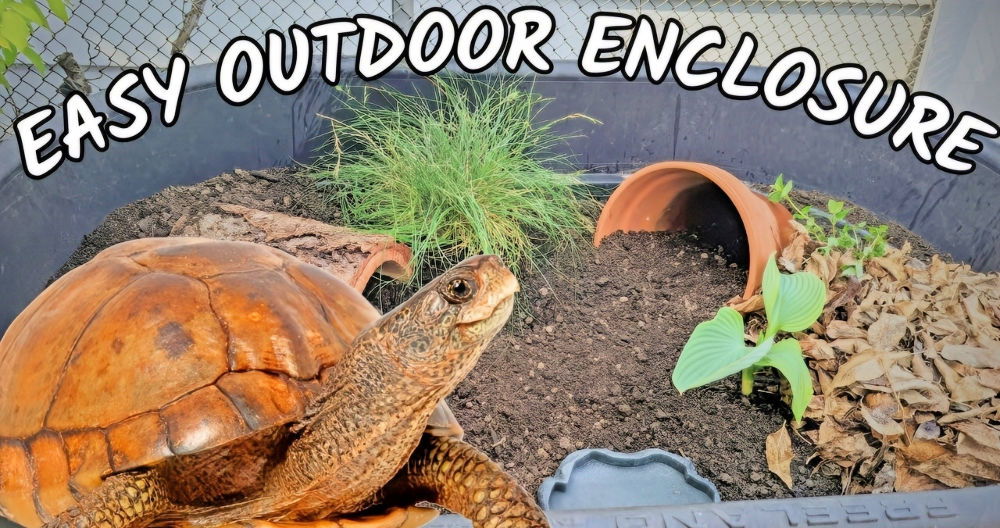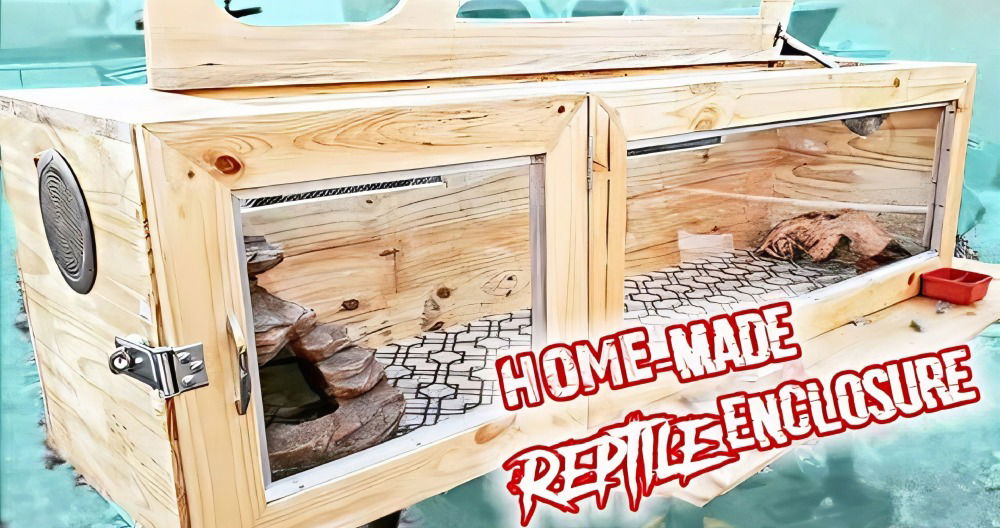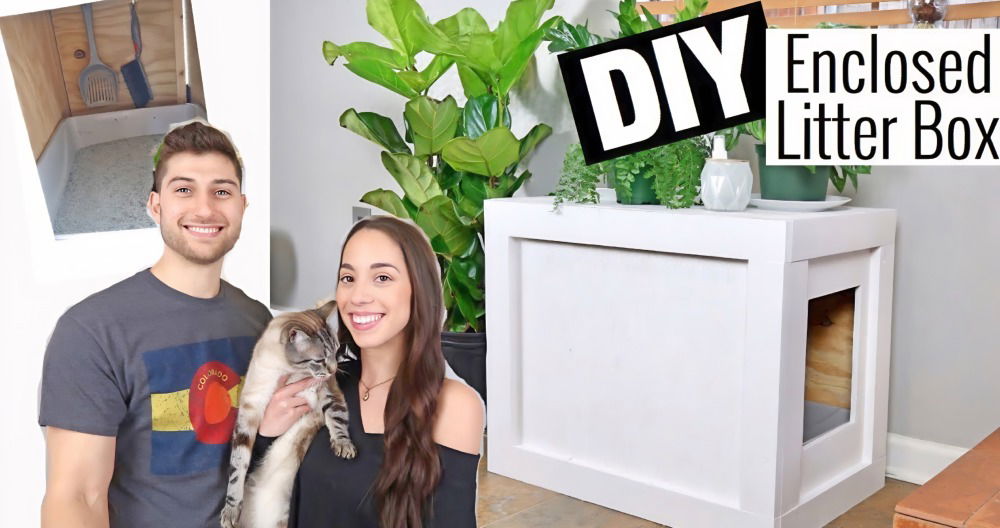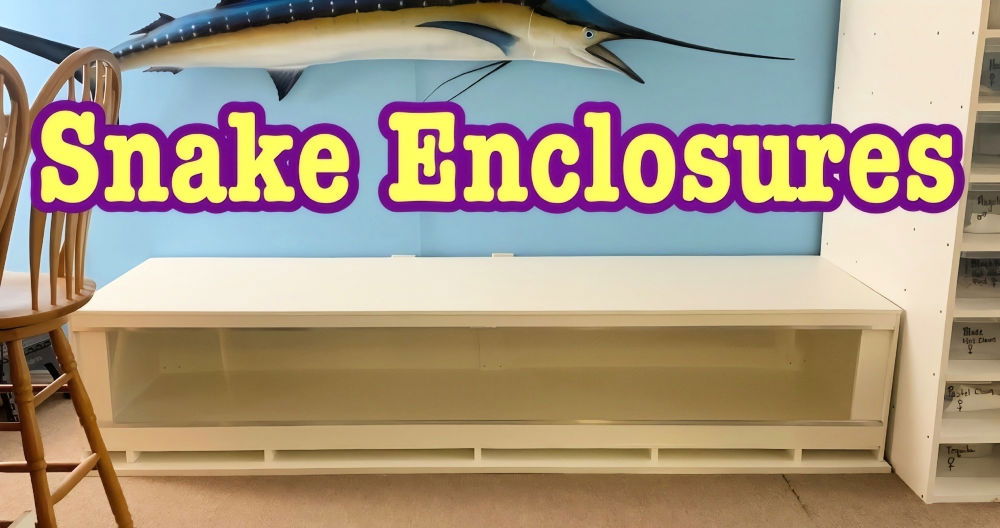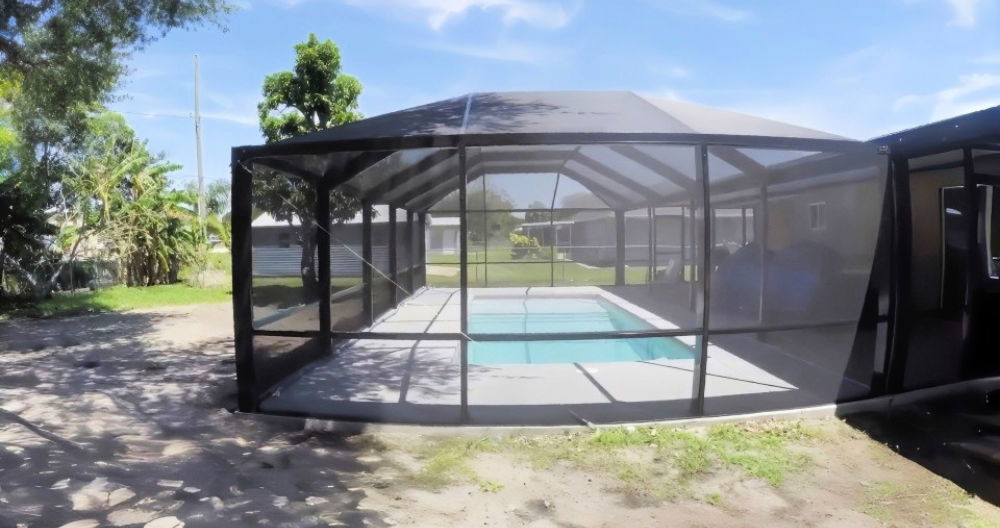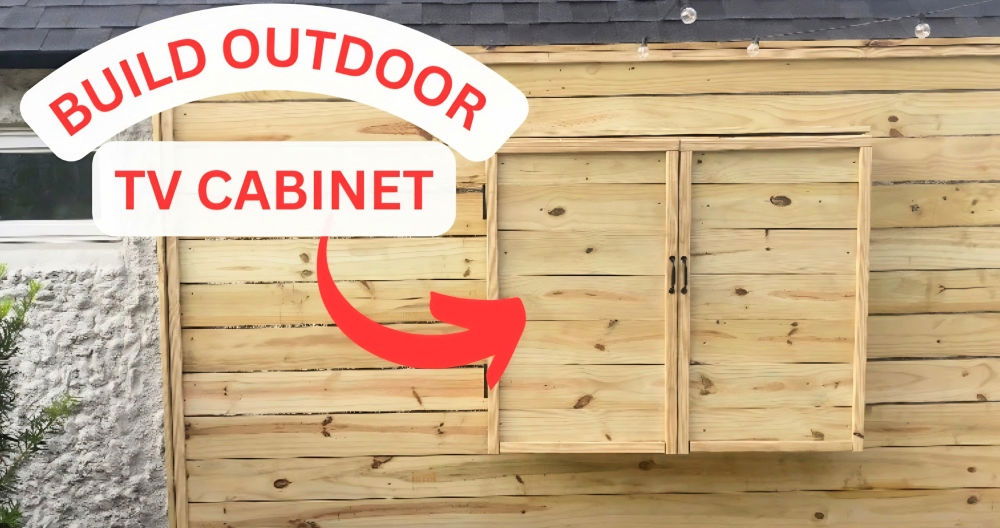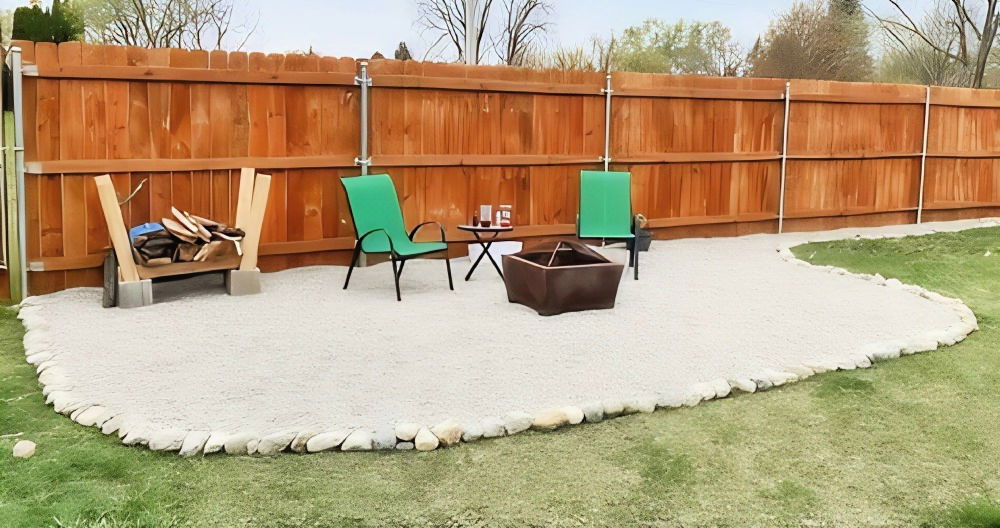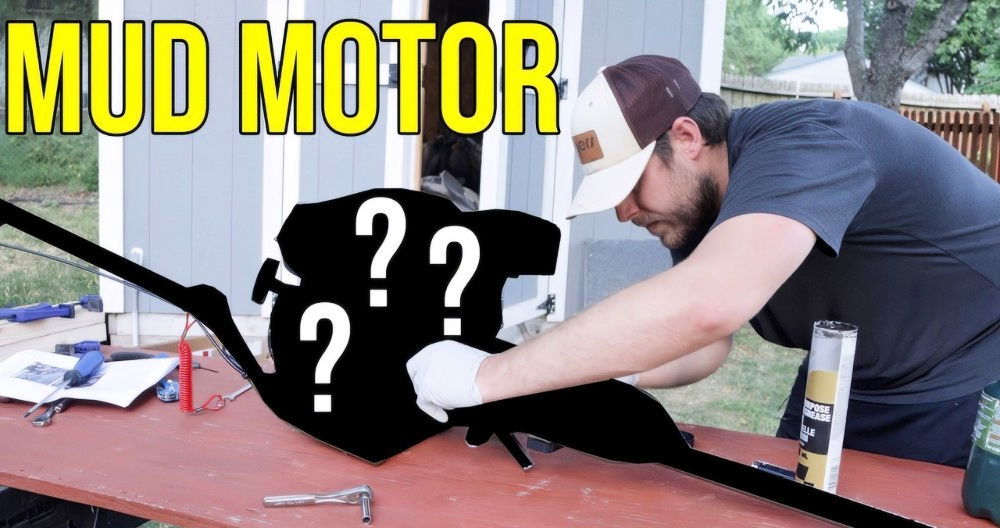Making a safe, comfortable, and functional outdoor enclosure for your Sulcata tortoise is an essential part of providing the best care for these remarkable creatures. This guide provides a step-by-step approach to building a DIY Sulcata tortoise enclosure, addressing materials, design elements, and tips for your tortoise's success.
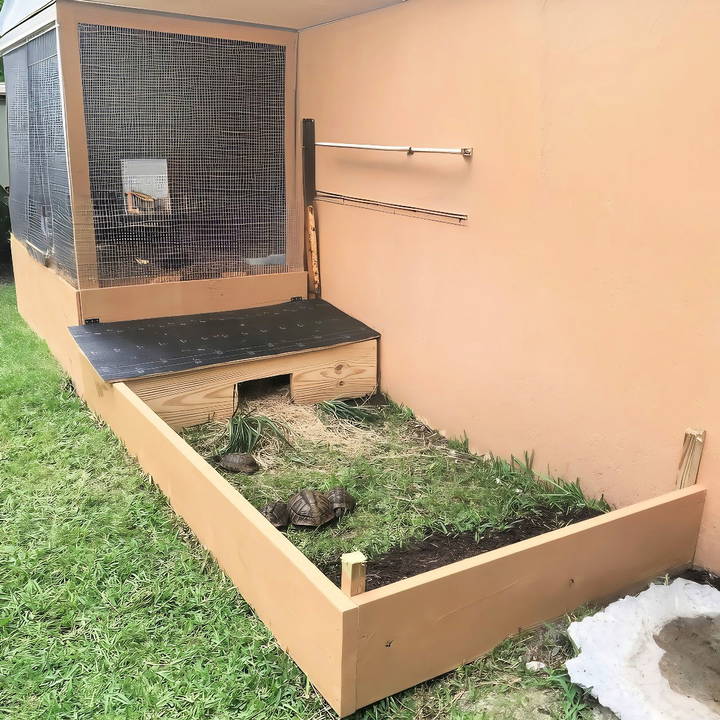
Why Build a Sulcata Tortoise Enclosure?
Sulcata tortoises, also known as African spurred tortoises, are among the largest tortoises in the world. They need plenty of space to roam, dig, and bask in the sun. A thoughtfully designed outdoor enclosure not only meets their physical needs but also protects them from predators, weather extremes, and other hazards.
Essential Considerations for Building the Enclosure
Before you start constructing your Sulcata tortoise enclosure, it's important to plan for the following factors:
1. Size of the Enclosure
- Sulcata tortoises require ample space to roam. An ideal starting size for one adult tortoise is at least 10 feet by 10 feet, but larger is always better.
- For hatchlings or juveniles, smaller enclosures can be used temporarily but should be upgraded as the tortoise grows.
2. Location
- Choose a sunny spot, as Sulcata tortoises are native to hot, arid climates and thrive with plenty of sunlight.
- Ensure the area is well-drained to prevent water pooling, which can lead to shell rot or respiratory issues.
3. Safety from Predators
- Use predator-proof barriers, especially if your tortoise is still small. Adding a screen or lid over the enclosure can prevent attacks from birds, raccoons, or stray animals.
Materials You'll Need
Gather the following materials to build a sturdy and long-lasting enclosure:
- Wooden planks or logs: For building the walls.
- Dirt and sand: To fill the enclosure and build a natural substrate.
- Plants: Edible and non-toxic varieties such as hibiscus or grasses.
- Water bowl: For hydration and soaking.
- Shade structures: Such as hides or small shelters.
- Paint and roof liner: To weatherproof the wood and prevent rot.
Step by Step Instructions
Build a safe, thriving sulcata tortoise enclosure with these step-by-step DIY instructions. Perfect for tortoise care and maintenance!
Step 1: Mark the Enclosure Area
- Decide on the size and shape of the enclosure. A rectangular or square design works best.
- Mark the boundaries using stakes or chalk lines.
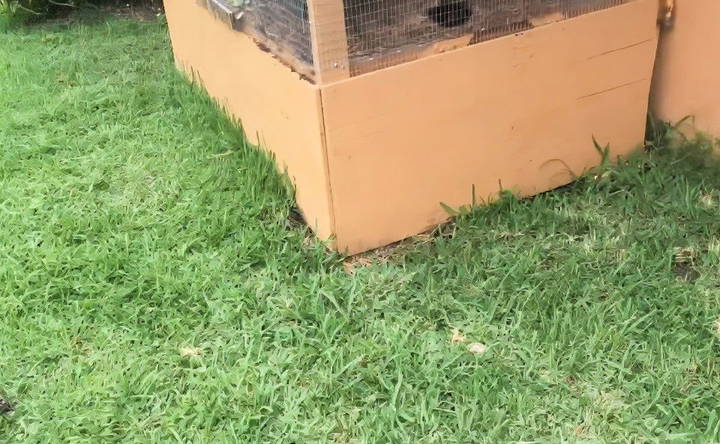
Step 2: Prepare the Ground
- Clear the area of debris, rocks, and weeds.
- Level the ground as much as possible, ensuring it slopes slightly for drainage.
Step 3: Build the Walls
- Use sturdy wooden planks to construct the walls. Ensure they are at least 16–24 inches high to prevent escape.
- For areas with loose soil, consider burying the planks at least 6 inches deep to deter digging.
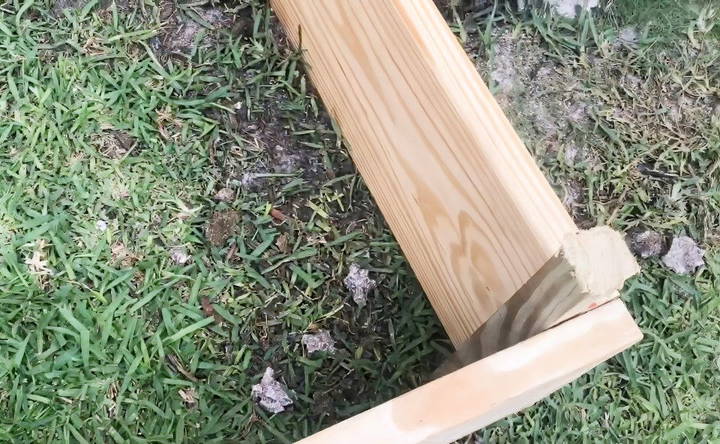
Step 4: Add Substrate
- Fill the enclosure with a mix of dirt and sand. Sulcata tortoises love to dig, so make sure the substrate is deep enough (at least 4–6 inches).
- Avoid using materials like gravel or synthetic carpets, which can harm their sensitive plastron (underside).
Step 5: Build a Hide
- Build a hide or shelter using leftover wood or logs. It should be large enough for the tortoise to retreat into for shade and security.
- Place the hide in a shaded area to keep it cool.
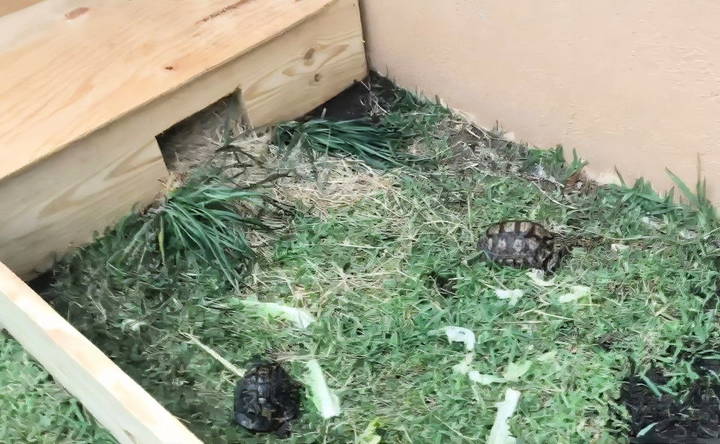
Step 6: Plant Edible Greens
- Incorporate tortoise-friendly plants like hibiscus, Bermuda grass, or edible succulents.
- These provide shade, enrichment, and supplemental nutrition.
Step 7: Install a Water Source
- Add a shallow water dish large enough for the tortoise to drink and soak in.
- Change the water daily to keep it clean.
Additional Features to Enhance the Enclosure
- Shade and Sun Regulation: Position the enclosure to provide a balance of sunlight and shade. Use plants or a tarp to build shaded areas.
- Nesting Area: Include a soft, sandy area for females to lay eggs. This is especially important if you have a breeding female.
- Secure Door or Gate: Build a hinged gate for easy access. Ensure it can be securely latched to prevent the tortoise from pushing it open.
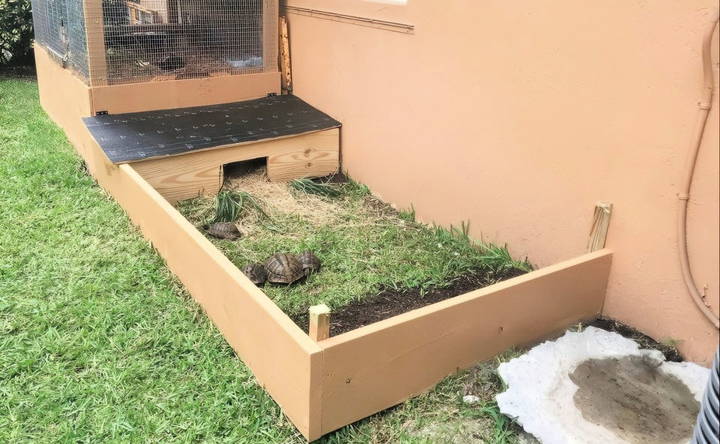
Maintenance and Upkeep
- Daily Tasks: Check for signs of escape attempts or damage to the enclosure.
- Refill water dishes and clean any waste.
- Weekly Tasks: Inspect and repair walls or other structures.
- Trim plants to maintain visibility and ensure the tortoise doesn't overgraze.
- Seasonal Maintenance: Apply a fresh coat of paint or sealant to protect the wood from rain.
- Adjust the placement of shade structures as needed based on the season.
Tips for Success
- Start Small and Scale Up: Begin with a smaller enclosure for hatchlings or juveniles, but always plan for the long term. Sulcata tortoises grow quickly and need larger spaces as they age.
- Predator-Proofing Is Key: Even large tortoises can fall prey to determined predators. Use sturdy materials and consider adding a roof or screen.
- Observe Behavior: Spend time observing your tortoise in its new enclosure. Look for signs of stress, such as excessive pacing or hiding, and adjust the setup as needed.
- Involve a Helper: Building a sturdy enclosure can be a physically demanding project. Enlist the help of a friend or family member for faster progress.
Common Mistakes to Avoid
- Underestimating Digging Abilities: Sulcata tortoises are expert diggers. Always bury walls or install barriers to prevent escape.
- Overcrowding: Avoid housing multiple tortoises in a small enclosure. This can lead to stress, aggression, and health issues.
- Using Toxic Plants: Always research plants before adding them to the enclosure. Many common garden plants are toxic to tortoises.
Conclusion
A well-designed outdoor enclosure is essential for the health and happiness of your Sulcata tortoise. By following the steps outlined in this guide, you can build a safe, enriching environment that mimics their natural habitat and allows them to thrive. Take the time to plan, build, and maintain your tortoise's enclosure, and you'll be rewarded with a happy and healthy companion for years to come.
FAQs About Sulcata Tortoise Enclosures
Discover essential FAQs about sulcata tortoise enclosures, providing expert tips for making the ideal habitat for your pet's well-being.
Always use a predator-proof screen or mesh roof for smaller tortoises to prevent attacks from birds or other animals. Regularly inspect the enclosure for potential entry points for predators.
Bury the walls of the enclosure at least 6–12 inches deep. Adding a wooden or mesh barrier beneath the substrate can also stop them from tunneling through.
It depends on your climate. Sulcata tortoises thrive in warm, arid environments. In colder areas, they need to be moved indoors or into a heated shelter during winter to avoid health issues.
Hay is a great option to line the hide. It’s soft, retains warmth, and provides a comfortable resting spot for your tortoise.
Choose a sunny area where temperatures can reach 95°F or provide a UVB lamp if kept indoors. Ensure there’s direct sunlight for natural basking when outside.
It’s risky to have pools near the enclosure. Accidental falls can lead to drowning. Always cover pools or create barriers to prevent access.
Edible, non-toxic plants like hibiscus, Bermuda grass, and collard greens are excellent options. They provide shade, food, and enrichment.
Costs vary widely. You can build an enclosure for as little as $80 using scrap wood and basic materials, or spend more depending on your design and plant choices.
Sulcata tortoises can handle light rain but should have a dry, covered area to retreat to during heavy rainfall. Ensure the enclosure is well-drained to avoid flooding.
Even if predators aren't a frequent concern, small tortoises are vulnerable. Adding a secure roof or mesh screen is a wise precaution to ensure their safety.


